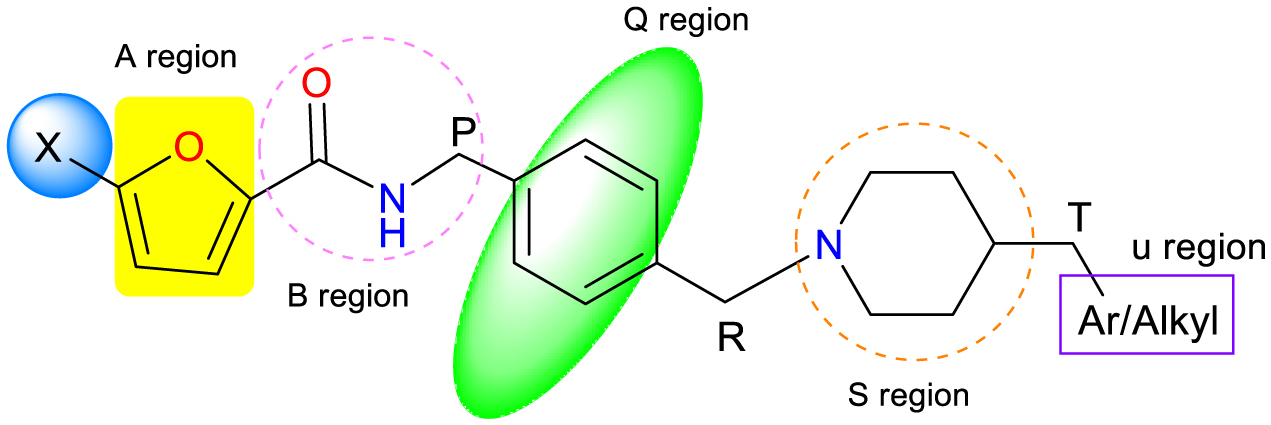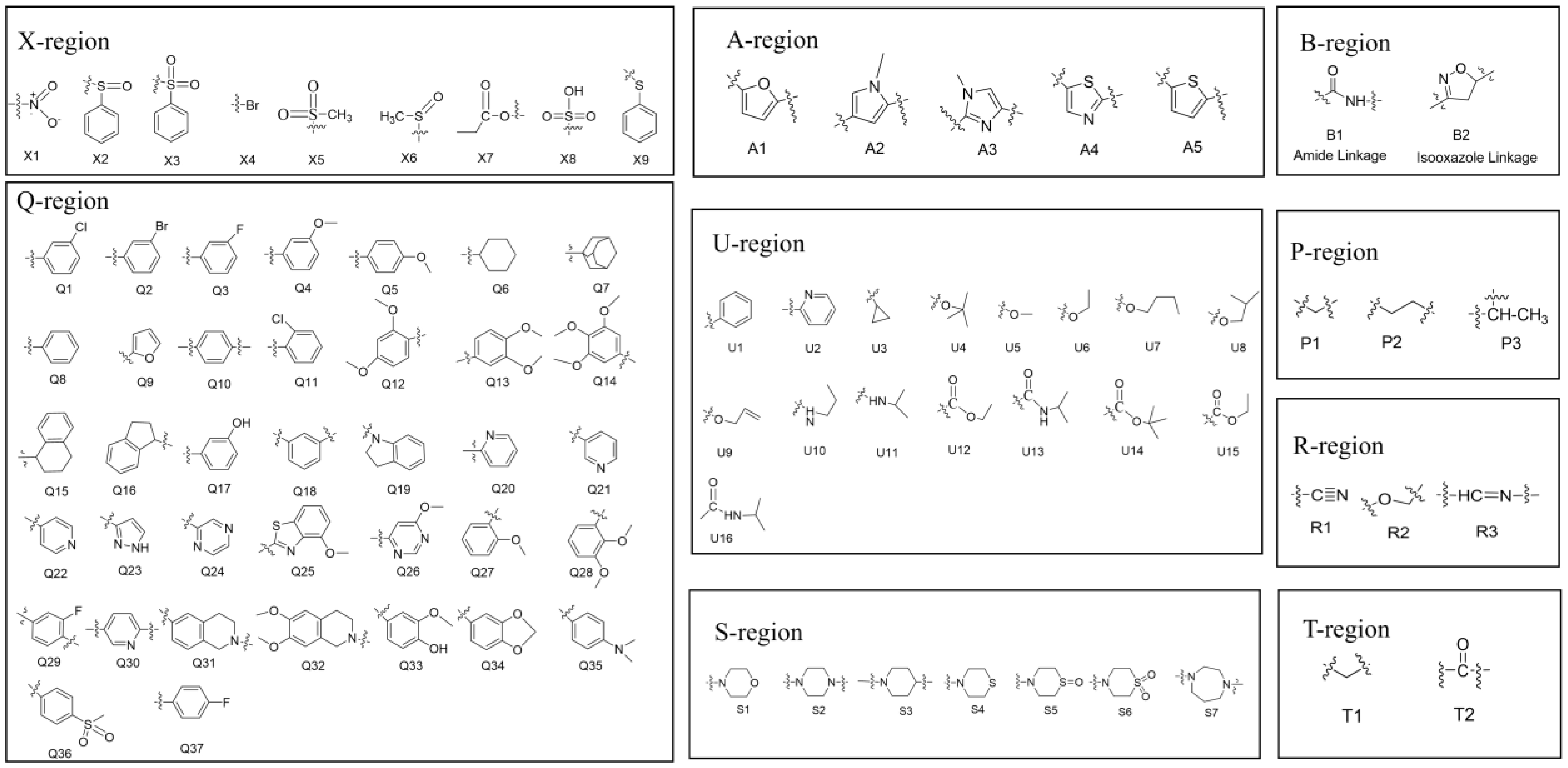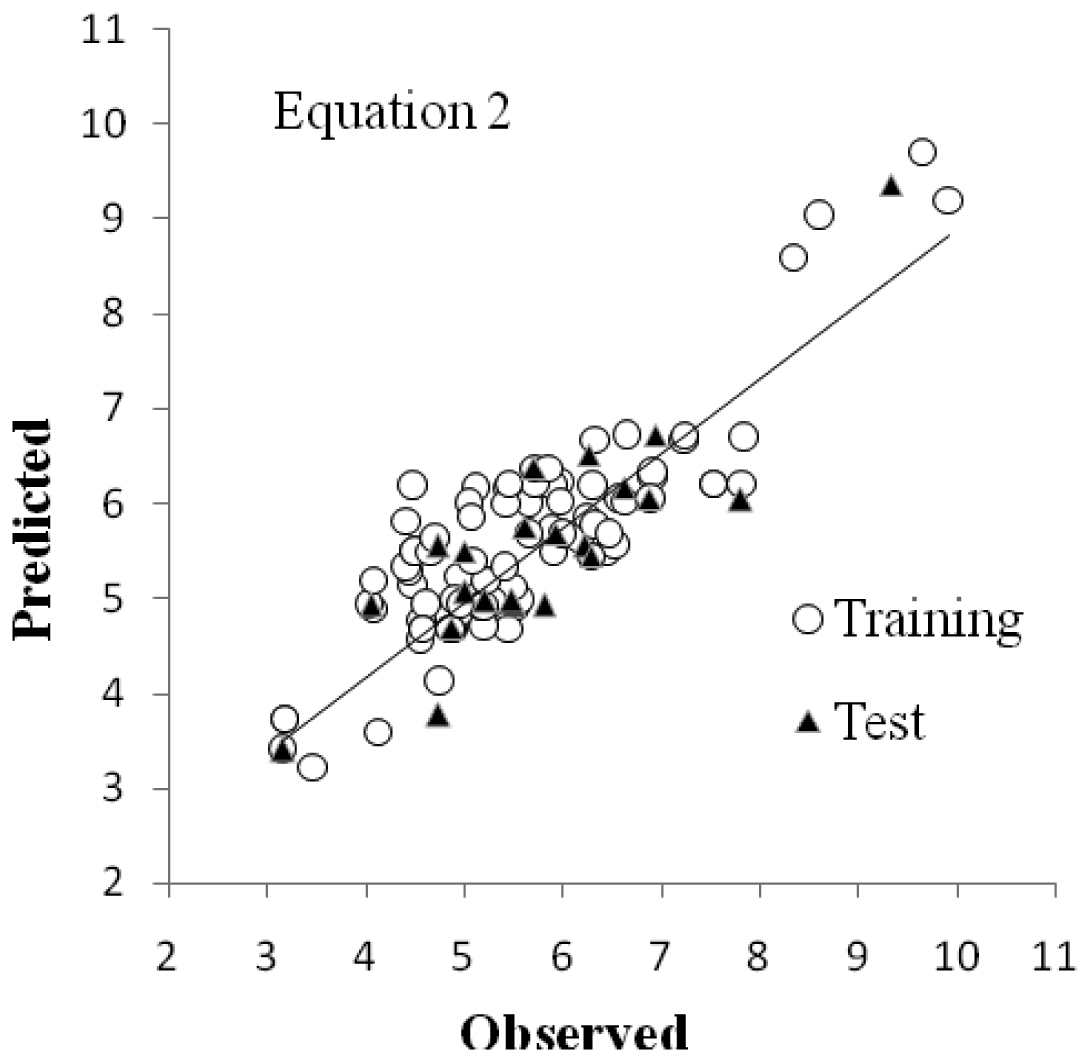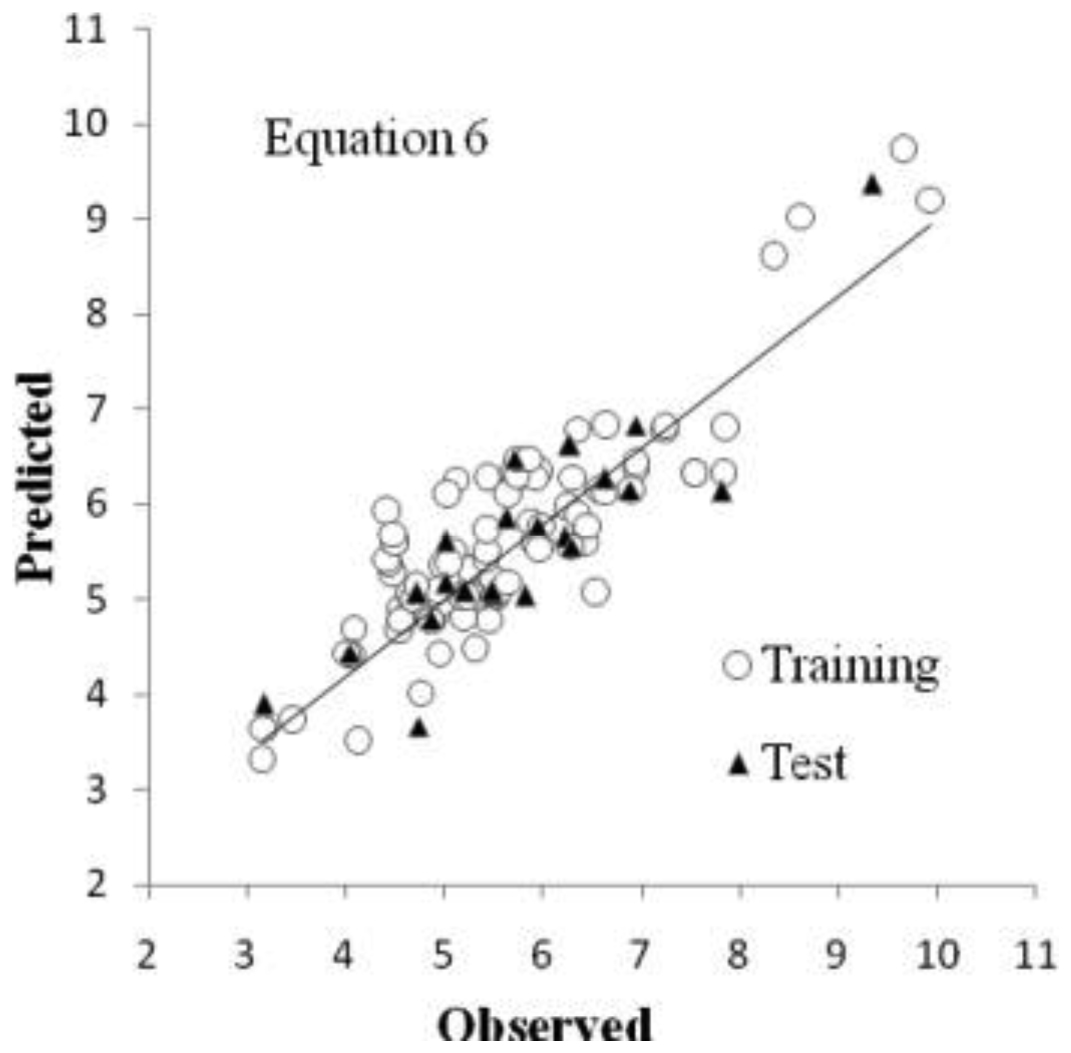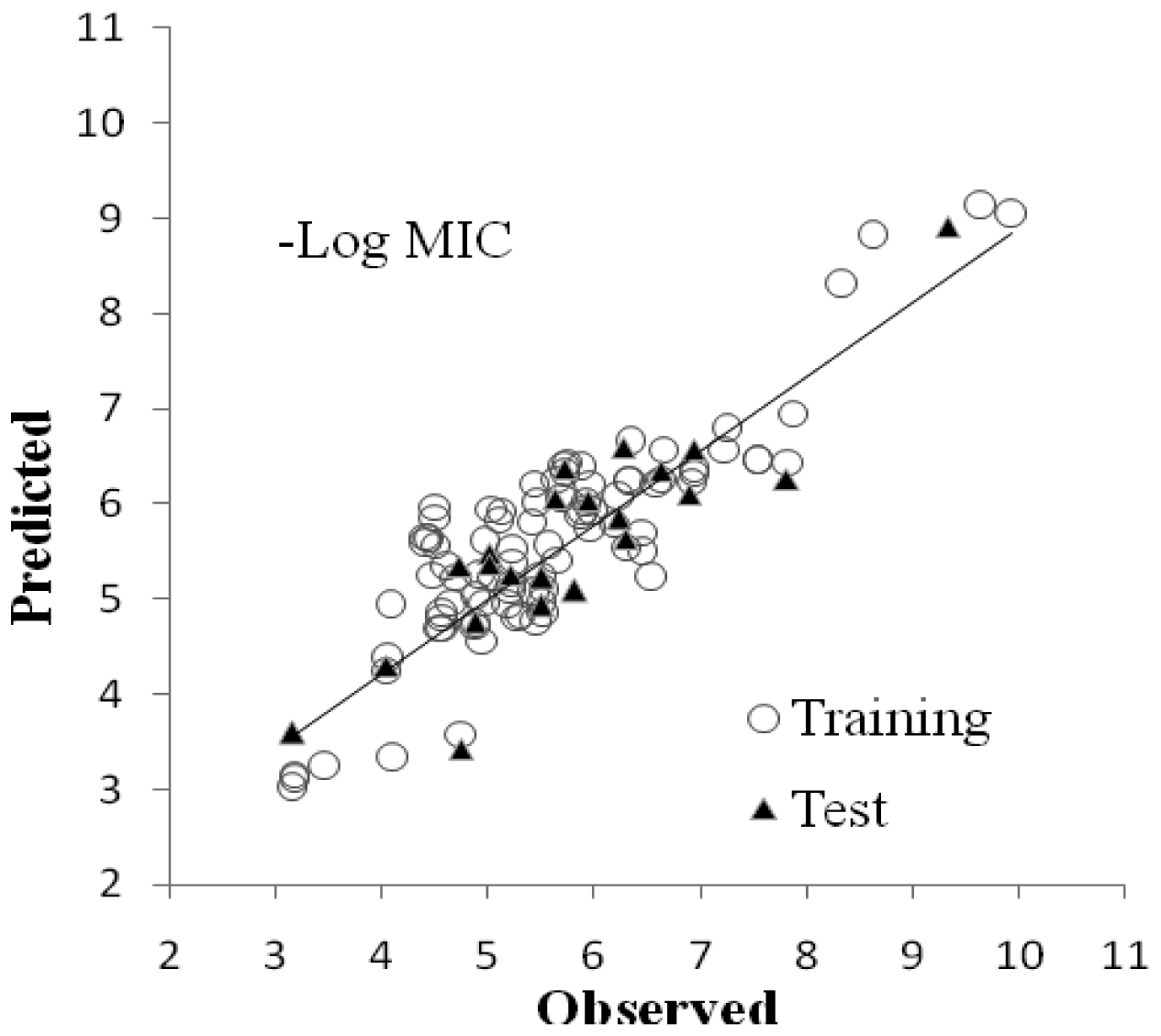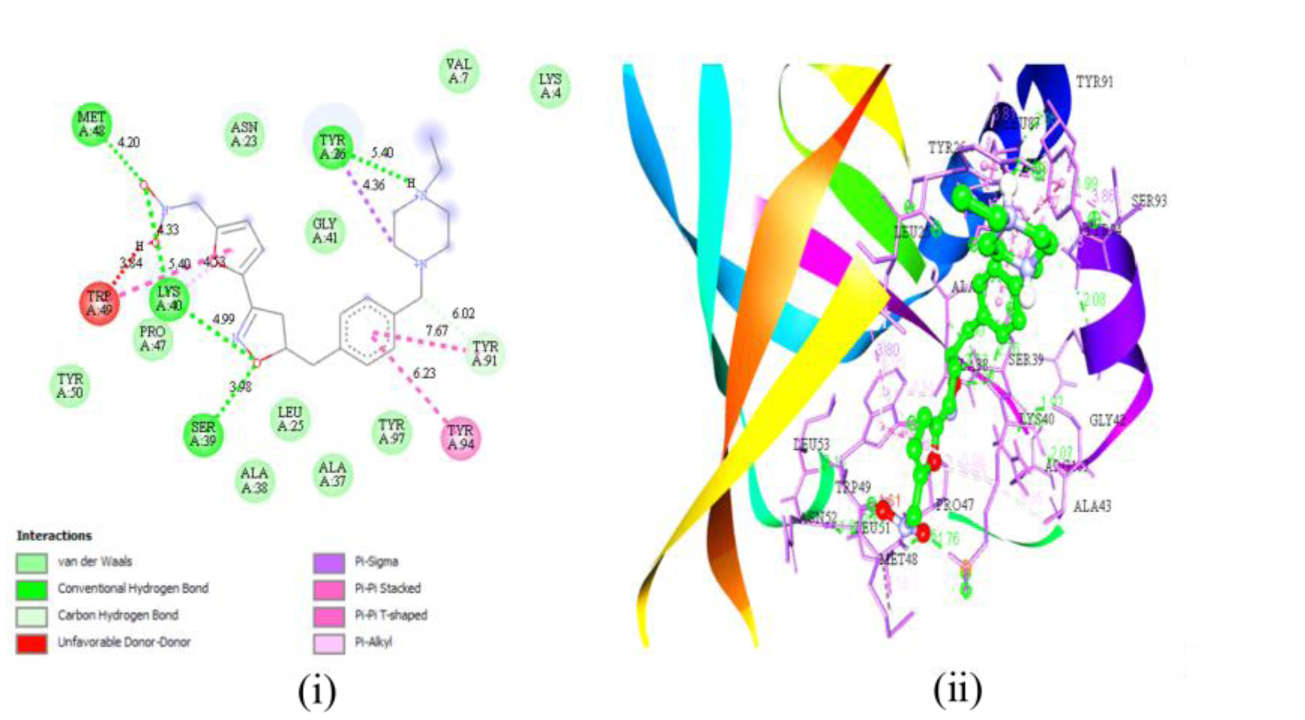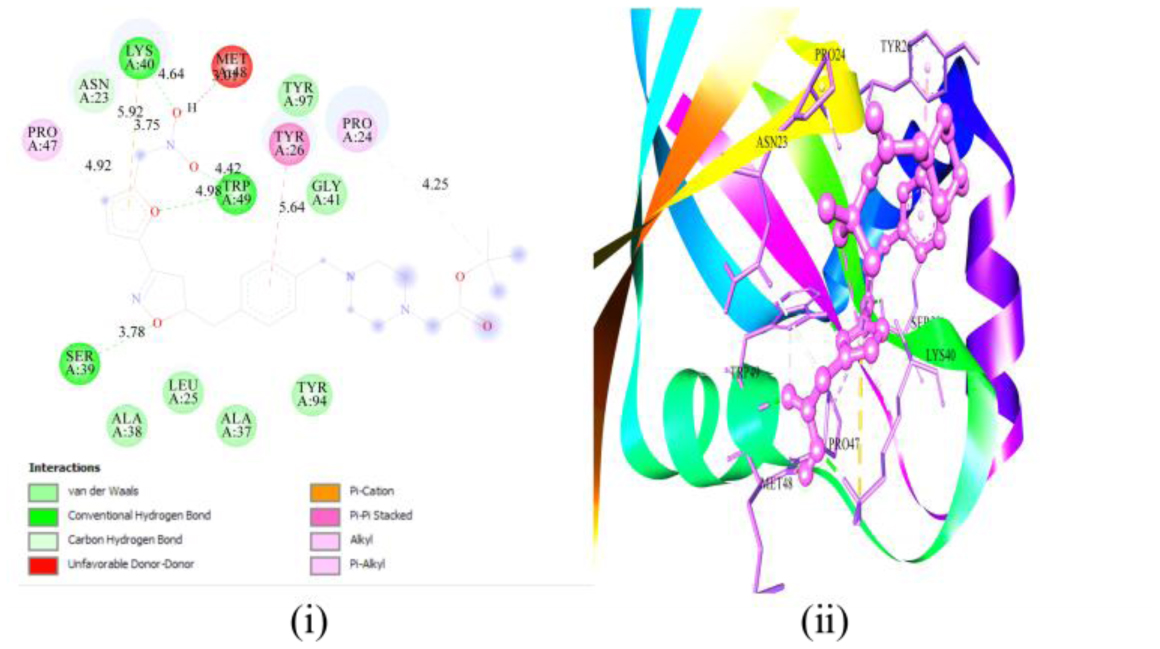|
[1]
|
Aarts P, Van Dijke P, Kolman I, et al. (2012) From Resilience to Revolt: Making Sense of the Arab Spring. Amsterdam, NL: WODC Publisher.
|
|
[2]
|
Abbott P, Teti A (2017) EU Policy Impact and Public Perception in the Mena Region. The Arab Transformations Working Paper Series 11: 1–65.
|
|
[3]
|
Abu-Murad MS, Alshyab N (2019) Political instability and its impact on economic growth: the case of Jordan. Int J Dev Issues 18: 366–380. https://doi.org/10.1108/ijdi-02-2019-0036 doi: 10.1108/ijdi-02-2019-0036

|
|
[4]
|
Acemoglu D, Johnson S, Robinson J (2001) The Colonial Origins of Comparative Development. Am Econ Rev 91: 1369–1401. https://doi.org/10.3386/w7771 doi: 10.3386/w7771

|
|
[5]
|
Acemoglu D, Naidu S, Restrepo P, et al. (2019) Democracy Does Cause Growth. J Polit Econ 127: 47–100. https://doi.org/10.3386/w7771 doi: 10.3386/w7771

|
|
[6]
|
Ahern KR, Daminelli D, Fracassi C (2015) Lost in translation? The effect of cultural values on mergers around the world. J Financ Econ 117: 165–189. https://doi.org/10.1016/j.jfineco.2012.08.006 doi: 10.1016/j.jfineco.2012.08.006

|
|
[7]
|
Albarracín J (2011) The Role of Turkey in the New Middle Eastern Economic Architecture, In: AA.VV., IEMed-Mediterranean Yearbook, Barcelona, SP: IEMed, 234–239.
|
|
[8]
|
Ali AJ (1999) Middle East Competitiveness in the 21st Century's Global Market. Acad Manage Rev 13: 102–108. https://doi.org/10.5465/ame.1999.1567367 doi: 10.5465/ame.1999.1567367

|
|
[9]
|
Altunisik MB (2009) The Role of Turkey in the Middle East, In: AA.VV., IEMed-Mediterranean Yearbook, Barcelona, SP: IEMed, 210–213.
|
|
[10]
|
Amendola A, Ferragina A (2012) Bridging the Gap: The Role of Trade and FDI in the Mediterranean. Soveria Mannelli, IT: Rubbettino.
|
|
[11]
|
Anderson D, Anderson E (2014) An Atlas of Middle Eastern Affairs, 2 Eds., New York, NY: Routledge.
|
|
[12]
|
Antràs P (2020) Conceptual Aspects of Global Value Chains World Bank. Econ Rev 34: 551–574. https://https://doi.org/10.1093/wber/lhaa006 doi: 10.1093/wber/lhaa006

|
|
[13]
|
Antràs P (2021) De-Globalization? Global Value Chain in the post-COVID-19 Age. NBER Working Paper Series 28115: 1–51.
|
|
[14]
|
Asongu SA, Nwachukwu JC (2015) Revolution empirics: predicting the Arab Spring. Empir Econ 51: 439–482. https://doi.org/10.1007/s00181-015-1013-0 doi: 10.1007/s00181-015-1013-0

|
|
[15]
|
Ayadi R, Dabrowski M, De Wulf L (2015) Economic and Social Development of the Southern and Eastern Mediterranean Countries. Berlin, DE: Springer.
|
|
[16]
|
Ayadi R, Giovannetti G, Marvasi E, et al. (2024) Trade networks and the productivity of MENA firms in global value chains. Struct Change Econ Dyn 69: 10–23. https://doi.org/10.1016/j.strueco.2023.11.014 doi: 10.1016/j.strueco.2023.11.014

|
|
[17]
|
Bailey M, Cao R, Kuchler T, et al. (2018) Social Connectedness: Measurement, Determinants, and Effects. J Econ Perspect 32: 259–280. https://doi.org/10.1257/jep.32.3.259 doi: 10.1257/jep.32.3.259

|
|
[18]
|
Barany Z (2011) The Role of the Military. J Democr 22: 24–35. https://doi.org/10.1353/jod.2011.0069 doi: 10.1353/jod.2011.0069

|
|
[19]
|
Beinin J, Vairel F (2013) Social Movements, Mobilization, and Contestation in the Middle East and North Africa. Stanford, CA: Stanford University Press.
|
|
[20]
|
Belokurov I, Demidova O, Signorelli M (2020) Cross-Country Inequality: A Markov Chain Approach. Working Paper presented at 21st Annual Scientific Conference of Italian Association for the Study of Comparative Economic Systems, Urbino, IT: 8–10 October.
|
|
[21]
|
Bernard AB, Jensen JB, Redding SJ, et al. (2018) Global Firms. J Econ Lit 56: 565–619. https://doi.org/10.1257/jel.20160792 doi: 10.1257/jel.20160792

|
|
[22]
|
Beugelsdijk S, Maseland R, Onrust M, et al. (2015) Cultural Distance in International Business and Management: From Mean-based to Variance-based Measures. Int J Hum Resour Manag 26: 165–191. https://doiorg/101080/095851922014922355
|
|
[23]
|
Bianchi R (2013) Islamic Globalization: Pilgrimage, Capitalism, Democracy. Singapore: World Scientific Press.
|
|
[24]
|
Biscop S, Sassel J (2017) Military Factors in the MENA Region: Challenging Trends. MENARA Working Paper Series 6: 1–33.
|
|
[25]
|
Bjornland HC, Thorsrud LA, Torvik R (2019) Dutch Disease Dynamics Reconsidered. Eur Econ Rev 119: 411–433. https://doi.org/10.1016/j.euroecorev.2019.07.016 doi: 10.1016/j.euroecorev.2019.07.016

|
|
[26]
|
Boserup RA, Tassinari F (2012) The Return of Arab Politics and Europe's Chance to Engage. Anew Med Polit 17: 97–103. https://doi.org/10.1080/13629395.2012.655047 doi: 10.1080/13629395.2012.655047

|
|
[27]
|
Brzezinski Z (1997) A Geostrategy for Eurasia. Foreign Aff 76: 50–64. https://doi.org/10.2307/20048199 doi: 10.2307/20048199

|
|
[28]
|
Çakmak C (2017) The Arab Spring, Civil Society, and Innovative Activism. New York, NY: Palgrave.
|
|
[29]
|
Calza F, Aliane N, Cannavale C (2010) Cross-Cultural Differences and Italian Firms' Internationalization in Algeria: Exploring Assertiveness and Performance Orientation. Eur Bus Rev 22: 246–272. https://doi.org/10.1108/09555341011023551 doi: 10.1108/09555341011023551

|
|
[30]
|
Calza F, Aliane N, Cannavale C (2013) Intercultural bridges in the internationalization of European businesses towards Islamic countries: the key role of cultural competence. Euro Med J Bus 8: 172–187. https://doi.org/10.1108/EMJB-07-2013-0038 doi: 10.1108/EMJB-07-2013-0038

|
|
[31]
|
Cammett M (2018) A Political Economy of the Middle East. Boulder: Westview Press.
|
|
[32]
|
Campante FR, Chor D (2012) Why was the Arab World Poised for Revolution? Schooling, Economic Opportunities, and the Arab Spring. J Econ Perspect 26: 167–188. https://doi.org/10.1257/jep.26.2.167 doi: 10.1257/jep.26.2.167

|
|
[33]
|
Carrère C, Masood M (2018) Cultural proximity: A source of trade flow resilience? World Econ 41: 1812–1832. https://doi.org/10.1111/twec.12646 doi: 10.1111/twec.12646

|
|
[34]
|
Castellani D, Narula R, Nguyen QT, et al. (2018) Contemporary issues in international business: institutions, strategy and performance. London, UK: Palgrave.
|
|
[35]
|
Cavalli-Sforza LL, Feldman MW (1981) Cultural Transmission and Evolution: A Quantitative Approach. Princeton, NJ: Princeton University Press.
|
|
[36]
|
Cavatorta E (2010) Unobserved Common Factors in Military Expenditure Interactions Across MENA Countries. Def Peace Econ 21: 301–316. https://doi.org/10.1080/10242694.2010.491703 doi: 10.1080/10242694.2010.491703

|
|
[37]
|
Chadwick A (2013) The Hybrid Media System: Politics and Power. Oxford, UK: Oxford University Press.
|
|
[38]
|
Çizakça M (2011) Islamic Capitalism and Finance: Origins, Evolution, and the Future. Cheltenham: Edward Elgar.
|
|
[39]
|
Collombier V (2018) Libya: Moving Beyond the Transitional Mood. MENARA-Future Notes 11: 1–6.
|
|
[40]
|
Corden WM, Neary JP (1982) Booming Sector and De-industrialization in a Small Open Economy. Econ J 92: 1–24. https://doi.org/10.2307/2232670 doi: 10.2307/2232670

|
|
[41]
|
Cordesman AH, Barfi B, Haddad B, et al. (2011) Symposium: The Arab Uprisings and US Policy: What Is the American National Interest? Middle East Policy 18: 1–28. https://doi.org/10.1111/j.1475-4967.2011.00481.x doi: 10.1111/j.1475-4967.2011.00481.x

|
|
[42]
|
Coveri A, Cozza C, Nascia L, et al. (2020) Supply chain contagion and the role of industrial policy. J Ind Bus Econ 47: 467–482. https://doi.org/10.1007/s40812-020-00167-6 doi: 10.1007/s40812-020-00167-6

|
|
[43]
|
Coveri A, Pianta M (2022) Drivers of inequality: wages vs profits in European industries. Struct Change Econ Dyn 60: 230–242. https://doi.org/10.1016/j.strueco.2021.11.016 doi: 10.1016/j.strueco.2021.11.016

|
|
[44]
|
Coveri A, Zanfei A (2023) The virtues and limits of specialization in global value chains: analysis and policy implications. J Ind Bus Econ 50: 73–90. https://doi.org/10.1007/s40812-022-00247-9 doi: 10.1007/s40812-022-00247-9

|
|
[45]
|
Cuomo MT, Genovino C, Metallo G, et al. (2023) When opposites attract: Impact of cultural distance and polarised success in the future of economic unions. Futures 153: 103223 https://doiorg/101016/jfutures2023103223
|
|
[46]
|
Currie J, Harrison A (1997) Sharing the Costs: The Impact of Trade Reform on Capital and Labor in Morocco. J Labor Econ 15: S44–S71.
|
|
[47]
|
D'Aponte T (2014) A geopolitical overview on the Mediterranean Sea the approach of the Euromed policy towards the countries of the southern front (from Morocco to Egypt). Riv Ital Econ Demogr Stat 68: 77–98.
|
|
[48]
|
Dabashi H (2012) Arab Spring: End Postcolonialism. London, UK: Zed Books.
|
|
[49]
|
Dabrowski M (2012) What Can Arab Countries Learn from the Post-Communist Transition. MED-PRO Commentary of European Commission 1: 1–6.
|
|
[50]
|
Dabrowski M (2019) Can emerging markets be a source of global troubles again? Russ J Econ 5: 67–87. https://doi.org/10.32609/j.ruje.5.35506 doi: 10.32609/j.ruje.5.35506

|
|
[51]
|
Dandashly A (2015) The EU Response to Regime Change in the Wake of the Arab Revolt: Differential Implementation. J Eur Integr 37: 37–56. https://doi.org/10.1080/07036337.2014.975988 doi: 10.1080/07036337.2014.975988

|
|
[52]
|
Daniele V, Malanima P, (2008) Divari di sviluppo e crescita nel Mediterraneo 1950–2005. Riv Ital Econ Demogr Stat 62: 59–76.
|
|
[53]
|
Dao MC, Das M, Koczan Z (2019) Why is labor receiving a smaller share of global income? Econ Policy 34: 723–759. https://doi.org/10.1093/epolic/eiaa004 doi: 10.1093/epolic/eiaa004

|
|
[54]
|
De Benedictis L, Rondinelli R, Vinciotti V (2023) Cultures as networks of cultural traits: A unifying framework for measuring culture and cultural distances. J R Stat Soc A 186: 264–293. https://doi.org/10.1093/jrsssa/qnac007 doi: 10.1093/jrsssa/qnac007

|
|
[55]
|
De Santis G, Maltagliati M, Salvini S (2016) A Measure of the Cultural Distance Between Countries. Soc Indic Res 126: 1065–1087. https://doi.org/10.1007/s11205-015-0932-7 doi: 10.1007/s11205-015-0932-7

|
|
[56]
|
Dedrick J, Kraemer KL, Linden, G (2010) Who profits from innovation in global value chains?: a study of the iPod and notebook PCs. Ind Corp Change 19: 81–116. https://doi.org/10.1093/icc/dtp032 doi: 10.1093/icc/dtp032

|
|
[57]
|
Del Sarto RA, Malmvig H, Lecha ES (2019) Interregnum: The Regional Order in the Middle East and North Africa after 2011. MENARA-Final Report 1: 1–57.
|
|
[58]
|
Demir F, Im H (2020) Effects of Cultural Institutes on Bilateral Trade and FDI Flows: Cultural Diplomacy or Economic Altruism? World Econ 43: 2463–2489. https://doi.org/10.1111/twec.12906 doi: 10.1111/twec.12906

|
|
[59]
|
Diamond L (2010) Why Are There No Arab Democracies? J Democr 21: 93–112. https://doi.org/10.1353/jod.0.0150 doi: 10.1353/jod.0.0150

|
|
[60]
|
Diop N, Marotta D, De Melo J (2012) Natural Resource Abundance, Growth, and Diversification in the Middle East and North Africa: The Effects of Natural Resources and the Role of Policies. Washington, DC: The World Bank.
|
|
[61]
|
Driouchi A (2014) Knowledge-Based Economic Policy Development in the Arab World. Hershey, PA: IGI-Global.
|
|
[62]
|
Dunning J, Narula R (1996) Foreign Direct Investment and Governments. London: UK: Taylor Francis.
|
|
[63]
|
Dupont C, Passy F (2011) Arab Spring or How Explain those Revolutionary Episodes? Swiss Political Sci Rev 17: 447–451. https://doi.org/10.1111/j.1662-6370.2011.02037.x doi: 10.1111/j.1662-6370.2011.02037.x

|
|
[64]
|
Durán JJ, Úbeda F (2001) Investment Development Path: A New Empirical Approach and Some Theoretical Issues. Transnatl Corpor 10: 1–34.
|
|
[65]
|
Egger PH, Lassmann A (2012) Language effect in international trade: A meta-analysis. Econ Lett 116: 221–224. https://doi.org/10.1016/j.econlet.2012.02.018 doi: 10.1016/j.econlet.2012.02.018

|
|
[66]
|
Egger PH, Toubal F (2016) Common spoken languages and international trade, In: Ginsburgh, V., Weber, S. (Eds.), The Palgrave Handbook of Economics and Language, New York, NY: Springer, 263–289.
|
|
[67]
|
Ehteshami A, Huber D, Paciello MC (2017) Mediterranean Reset: Geopolitics New Age. Chichester: Wiley.
|
|
[68]
|
Elbadawi I, Makdisi S, (Eds.) (2017) Democratic Transitions in the Arab World. Cambridge, NY: Cambridge University Press.
|
|
[69]
|
El-Said H, Harrigan J (2014) Economic reform, social welfare, and instability: Jordan, Egypt, Morocco, and Tunisia, 1983–2004. Middle East J 68: 99–121. https://doi.org/10.3751/68.1.15 doi: 10.3751/68.1.15

|
|
[70]
|
ESI (2005) Islamic Calvinism: Change and Conservatism in Central Anatolia. European Stability Initiative Draft, 19 September, 1–41.
|
|
[71]
|
EURO-MED AGENDA (1995) Barcelona Declaration. Euro-Mediterranean Conference, Barcelona, Spain, 27–28 November: 1–14.
|
|
[72]
|
EURO-MED AGENDA (2021) Ex-Post Evaluation of the Impact of Trade Chapters of the Euro-Mediterranean Association Agreements with Six Partners: Algeria, Egypt, Jordan, Lebanon, Morocco, and Tunisia. Brussels, NL: Directorate General for Trade, 1–930.
|
|
[73]
|
Feenstra RC (1998) Integration of trade and disintegration of production in the global economy. J Econ Perspect 12: 31–50. https://doi.org/10.1257/jep.12.4.31 doi: 10.1257/jep.12.4.31

|
|
[74]
|
Felbermayr GJ, Toubal F (2010) Cultural proximity and trade. Eur Econ Rev 54: 279–293. https://doi.org/10.1016/j.euroecorev.2009.06.009 doi: 10.1016/j.euroecorev.2009.06.009

|
|
[75]
|
Fernández R (2008) Culture and Economics, In: Durlauf, S.N., Blume, L.E., (Eds.), The New Palgrave Dictionary of Economics, London, UK: Palgrave Macmillan, 1–10.
|
|
[76]
|
Ferragina AM (2014) Investment in Turbulent Times: How Political Turbulence Has Affected the FDI Level in the MENA Region, In: AA.VV., IEMed-Mediterranean Yearbook, Barcelona, SP: IEMed, 280–286.
|
|
[77]
|
Ferragina AM (2016) Frammentazione Internazionale della Produzione: La Posizione dei Paesi Mediterranei dell'area MENA nelle Catene Globali del Valore, In: Ferragina, E. (Ed.), Rapporto sulle Economie del Mediterraneo, Bologna, IT: Il Mulino, Ch 7.
|
|
[78]
|
Ferragina E (2011) Gli Investimenti Esteri: Il Ruolo delle Istituzioni, In: Malanima, P. (Ed.), Rapporto sulle Economie del Mediterraneo, Bologna, IT: Il Mulino, Ch 5.
|
|
[79]
|
Ferragina E (2015) Rapporto sulle Economie del Mediterraneo. Bologna, IT: Il Mulino.
|
|
[80]
|
Forte L, Canitano G, Carli MR (2018) Crescita Economica, Produzione Manifatturiera e Commercio Estero nei Paesi del Mediterraneo: Differenze e Complementarietà tra Paesi Euromediterranei e Paesi della Sponda Sud ed Est del Bacino, In: Ferragina, E. (Ed.), Rapporto sulle Economie del Mediterraneo, Bologna, IT: Il Mulino, Ch 3.
|
|
[81]
|
Freedom House (2011) Freedom in the World: The Annual Survey of Political Rights and Civil Liberties. Piscataway, NJ: Rutgers State University Press.
|
|
[82]
|
Fukuyama F (2020) The End of History and the Last Man. London, UK: Penguin.
|
|
[83]
|
Gani JK, Hinnebusch R (2019) The Routledge Handbook to the Middle East and North African State and States System. London, UK: Routledge.
|
|
[84]
|
Gerges FA (2013) New Middle East: Protest and Revolution in the Arab World. Cambridge, NY: Cambridge University Press.
|
|
[85]
|
Ghazali M (2009) Trade Openness and Wage Inequality between Skilled and Unskilled Workers in Tunisia. Economie Internationale 1: 63–97.
|
|
[86]
|
Gillespie R, Volpi F (2018) Handbook Mediterranean Politics. New York, NY: Routledge.
|
|
[87]
|
Giovannetti G, Marvasi E (2019) Trade Networks in the MENA Region, In: AA.VV., IEMed-Mediterranean Yearbook, Barcelona, SP: IEMed, 270–279.
|
|
[88]
|
Giovannetti G, Marvasi E, Sanfilippo M (2015) Supply Chains and the Internationalization of Small Firms. Small Bus Econ 44: 845–865. https://doi.org/10.1007/s11187-014-9625-x doi: 10.1007/s11187-014-9625-x

|
|
[89]
|
Gisselquist RM (2015) Varieties of Fragility: Implications for Aid. Third World Q 36: 1269–1280. https://doi.org/10.1080/01436597.2015.1041104 doi: 10.1080/01436597.2015.1041104

|
|
[90]
|
Gooris J, Peeters C (2014) Home-host Country Distance in Offshore Governance Choices. J Int Manag 20: 73–86. https://doi.org/10.1016/j.intman.2013.02.002 doi: 10.1016/j.intman.2013.02.002

|
|
[91]
|
Gorodnichenko Y, Roland G (2017) Culture, Institutions, and the Wealth of Nations. Rev Econ Stat 99: 402–416. https://doi.org/10.1162/rest_a_00599 doi: 10.1162/rest_a_00599

|
|
[92]
|
Guecioueur A (2019) Obstacles to Arab Economic Integration: The Problems of Arab Economic Development and Integration. New York, NY: Routledge.
|
|
[93]
|
Hafez G (2016) The Arab Spring five years later: toward greater inclusiveness. Washington, DC: Brookings Press.
|
|
[94]
|
Hakimian H, Nugent JB (2003) Trade Policy and Economic Integration in the Middle East and North Africa: Economic boundaries in flux. London, UK: Routledge.
|
|
[95]
|
Haliti B, Merovci S (2020) The Impact of the Investment Environment on Foreign Direct Investment (FDI) in the European Transition Economies. Econ Alternatives 1: 138–147. https://doi.org/10.37075/ea.2020.1.07 doi: 10.37075/ea.2020.1.07

|
|
[96]
|
Halliday F (2005) The Middle East in International Relations Power, Politics and Ideology. Cambridge, NY: Cambridge University Press.
|
|
[97]
|
Hanieh A (2014) Shifting Priorities or Business as Usual? Continuity and Change in the post-(2011) IMF and World Bank Engagement with Tunisia, Morocco, and Egypt. Br J Middle East Stud 42: 119–134. https://doi.org/10.1080/13530194.2015.973199 doi: 10.1080/13530194.2015.973199

|
|
[98]
|
Harms P, Méon PG (2017) Good and Useless FDI: The Growth Effects of Greenfield Investment and Mergers and Acquisitions. Rev Int Econ 26: 37–59. https://doi.org/10.1111/roie.12302 doi: 10.1111/roie.12302

|
|
[99]
|
Hartmann D, Guevara MR, Jara-Figueroa C, et al. (2017) Linking Economic Complexity, Institutions, and Income Inequality. World Dev 93: 75–93. https://doi.org/10.1016/j.worlddev.2016.12.020 doi: 10.1016/j.worlddev.2016.12.020

|
|
[100]
|
Hassine NB (2012) Inequality of Opportunity in Egypt. World Bank Econ Rev 2: 265–295. https://doi.org/10.1093/wber/lhr046 doi: 10.1093/wber/lhr046

|
|
[101]
|
HEIDELBERG INSTITUTE (2020) Conflict Barometer. Heidelberg University: Institute for International Conflict Research, 1–203.
|
|
[102]
|
Hellmanzik C, Schmitz M (2017) Taking gravity online: The role of virtual proximity in international finance. J Int Money Finan 77: 164–179. https://doi.org/10.1016/j.jimonfin.2017.07.001 doi: 10.1016/j.jimonfin.2017.07.001

|
|
[103]
|
Helpman E (2017) Globalisation and wage inequality. J Br Acad 5: 125–162. https://doi.org/10.5871/jba/005.125 doi: 10.5871/jba/005.125

|
|
[104]
|
Hobson C (2005) A Forward Strategy of Freedom in the Middle East: US Democracy Promotion and the 'War on Terror'. Aust J Int Aff 59: 39–53. https://doi.org/10.1080/1035771042000332039 doi: 10.1080/1035771042000332039

|
|
[105]
|
Hoekman B, Messerlin P (2002) Initial Conditions and Incentives for Arab Economic Integration. Policy Research Working Paper Series 2921: 1–43. https://doi.org/10.1596/1813-9450-2921 doi: 10.1596/1813-9450-2921

|
|
[106]
|
Hoekman B, Sekkat K (2010) Arab Economic Integration: Missing Links. CEPR-Discussion Paper 7807: 1–39.
|
|
[107]
|
Hofstede G, Hofstede GJ, Minkov M (2010) Cultures and Organizations: Software of the Mind, 3 Eds., New York, NY: McGraw Hill.
|
|
[108]
|
Horst J, Jünemann A, Rothe D (2016) Euro-Mediterranean Relations After the Arab Spring: Persistence in Times of Change. Abingdon, UK: Taylor & Francis.
|
|
[109]
|
Howard P (2010) The Digital Origins of Dictatorship and Democracy: Information Technology and Political Islam. Oxford, UK: Oxford University Press.
|
|
[110]
|
Hudson M (1977) Arab Politics: The Search for Legitimacy. New Haven, CT: Yale University Press.
|
|
[111]
|
Huidrom R, Kose MA, Ohnsorge F (2017) How Important are Spillovers from Major Emerging Markets? Washington, DC: The World Bank.
|
|
[112]
|
Hutzschenreuter T, Kleindienst I, Lange S (2016) The Concept of Distance in International Business Research: A Review and Research Agenda. Int J Manag Rev 18: 160–179. https://doi.org/10.1111/ijmr.12065 doi: 10.1111/ijmr.12065

|
|
[113]
|
Hutzschenreuter T, Voll JC, Verbeke A (2011) The Impact of Added Cultural Distance and Cultural Diversity on International Expansion Patterns: A Penrosean Perspective. J Manag Stud 48: 305–329. https://doi.org/10.1111/j.1467-6486.2010.00966.x doi: 10.1111/j.1467-6486.2010.00966.x

|
|
[114]
|
IEMED (2012) What Economic Governance for Arab Transitions? Barcelona, SP: IEMed.
|
|
[115]
|
ILO (2012) Rethinking economic growth: towards productive and inclusive Arab societies. Geneva: International Labour Organization.
|
|
[116]
|
IMF (1996) MENA Conference Stresses Economic Potential of the Region. World Economic and Financial Surveys, Washington, DC: International Monetary Fund.
|
|
[117]
|
IMF (2013) Regional Economic Outlook Report: Middle East and Central Asia. World Economic and Financial Surveys, Washington, DC: International Monetary Fund.
|
|
[118]
|
IMF (2014) Arab Countries in Transition: Economic Outlook and Key challenges. World Economic and Financial Surveys Washington, DC: International Monetary Fund.
|
|
[119]
|
IMF (2019) Reigniting Growth in Emerging Market and Low-Income Economies: What Role for Structural Reforms? In: AA.VV., World Economic Outlook: Global Manufacturing Downturn, Rising Trade Barriers, Washington, DC: International Monetary Fund, Ch 3.
|
|
[120]
|
IMF (2020) Middle East and Central Asia: Regional Economic Outlook. Washington, DC: International Monetary Fund.
|
|
[121]
|
IMF (2022) Regional Economic Outlook: Middle East and Central Asia. Washington, DC: International Monetary Fund.
|
|
[122]
|
Irwin D (2020) Free Trade Under Fire. Princeton, NJ: Princeton University Press.
|
|
[123]
|
Jaumotte F, Lall S, Papageorgiou C (2013) Rising Income Inequality: Technology, or Trade and Financial Globalization? IMF Econ Rev 61: 271–309. https://doi.org/10.1057/imfer.2013.7 doi: 10.1057/imfer.2013.7

|
|
[124]
|
Joffé G (2011) The Arab Spring in North Africa: Origins and Prospects. J North Afr Stud 16: 507–532. https://doi.org/10.1080/13629387.2011.630881 doi: 10.1080/13629387.2011.630881

|
|
[125]
|
Joya A (2011) The Egyptian Revolution: Crisis of Neo-Liberalism and the Potential for Democratic Politics. Rev Afr Polit Econ 38: 367–386. https://doi.org/10.1080/03056244.2011.602544 doi: 10.1080/03056244.2011.602544

|
|
[126]
|
Kaboub F (2013) The End of Neoliberalism? An Institutional Analysis of the Arab Uprisings. J Econ Issues 47: 533–544 https://doi.org/10.2753/jei0021-3624470227 doi: 10.2753/jei0021-3624470227

|
|
[127]
|
Kahia M (2017) The Framework of Tunisian Textile and Clothing Industry, MPRA-Working Papers 60283, 04 February: 1–21.
|
|
[128]
|
Kamrava M (2004) Structural Impediments to Economic Globalization in the Middle East. Middle East Policy 11: 96–112. https://doi.org/10.1111/j.1061-1924.2004.00180.x doi: 10.1111/j.1061-1924.2004.00180.x

|
|
[129]
|
Karam F, Zaki C (2015) Trade Volume and Economic Growth in the MENA Region: Goods or Services? Econ Model 45: 22–37. https://doi.org/10.1016/j.econmod.2014.10.038 doi: 10.1016/j.econmod.2014.10.038

|
|
[130]
|
Kaufmann D, Kraay A (2002) Growth without Governance. Economía 3: 169–229. https://doi.org/10.1353/eco.2002.0016 doi: 10.1353/eco.2002.0016

|
|
[131]
|
Kaufmann D, Kraay A, Mastruzzi M (2011) The Worldwide Governance Indicators: Methodology and Analytical Issues. Hague J Rule Law 3: 220–246. https://doi.org/10.1017/s1876404511200046 doi: 10.1017/s1876404511200046

|
|
[132]
|
Kaufmann D, Kraay A, Zoido P (1999) Governance Matters. Policy Res Working Paper 2196: 1–64. https://doi.org/10.1596/1813-9450-2196 doi: 10.1596/1813-9450-2196

|
|
[133]
|
Kenawy E (2016) The Economic Impacts of the New Suez Canal, In: AA.VV., IEMed-Mediterranean Yearbook, Barcelona, SP: IEMed, 282–288.
|
|
[134]
|
Khandelwal P, Roitman A (2013) The Economics of Political Transitions: Implications for the Arab Spring. IMF-Working Papers 2013: 1–13. https://doi.org/10.5089/9781475569643.001 doi: 10.5089/9781475569643.001

|
|
[135]
|
Khondker HH (2011) Role of the New Media in the Arab Spring. Globalizations 8: 675–679. https://doi.org/10.1080/14747731.2011.621287 doi: 10.1080/14747731.2011.621287

|
|
[136]
|
Kowalewski O, Rybinski KI (2011) The Hidden Transformation: Changing Role of the State After the Collapse of Communism in Central and Easter Europe. Oxf Rev Econ Policy 27: 634–657. https://doi.org/10.1093/oxrep/grr030 doi: 10.1093/oxrep/grr030

|
|
[137]
|
Krugman PR, Melitz MJ, Obstfeld M (2018) International Economics: Theory and Policy. London, UK: Pearson.
|
|
[138]
|
Kuran T (2011) The long divergence: How Islamic law held back the Middle East. Princeton, NJ: Princeton University Press.
|
|
[139]
|
Lall S, Sturgeon TJ, Gereffi G (2009) Measuring success in the global economy: International trade, industrial upgrading, and business function outsourcing in global value chains. Transnat Corporations 18: 1–35. https://doi.org/10.18356/64e03043-en doi: 10.18356/64e03043-en

|
|
[140]
|
Lautier M, Morebaub F (2012) Domestic Investment and FDI in Developing Countries: The Missing Link. J Econ Dev 37: 1–23. https://doi.org/10.35866/caujed.2012.37.3.001 doi: 10.35866/caujed.2012.37.3.001

|
|
[141]
|
Liargovas PG, Skandalis KS (2011) Foreign Direct Investment and Trade Openness: The Case of Developing Economies. Soc Indic Res 106: 323–331. https://doi.org/10.1007/s11205-011-9806-9 doi: 10.1007/s11205-011-9806-9

|
|
[142]
|
Liu A, Lu C, Wang Z (2020) The Roles of Cultural and Institutional Distance in International Trade: Evidence from China's Trade with the Belt-and-Road Countries. China Econ Rev 61: 101234. https://doi.org/10.1016/j.chieco.2018.10.001 doi: 10.1016/j.chieco.2018.10.001

|
|
[143]
|
Makarychev AS (2009) Russia in the Mediterranean Region: (Re)sources of Influence, In: AA.VV., IEMed-Mediterranean Yearbook, Barcelona, SP: IEMed, 169–172.
|
|
[144]
|
Manhire T (Ed.) (2012) The Arab Spring: Rebellion, Revolution New World Order. London, UK: Guardian Books.
|
|
[145]
|
Marelli E, Signorelli M (2010) Economic Growth and Structural Features of Transition: Theoretical Framework and General Overview, In: Marelli, E., Signorelli, M. (Eds.), Economic Growth and Structural Features of Transition: Studies in Economic Transition, London, UK: Palgrave, 11–38.
|
|
[146]
|
Marsili M (2016) The Islamic State: A Clash within the Muslim Civilization for the New Caliphate. Stud Confl Terror 39: 85–105. https://doi.org/10.1080/1057610X.2015.1100010 doi: 10.1080/1057610X.2015.1100010

|
|
[147]
|
Martín-Martín O, Drogendijk R (2014) Country Distance (COD): Development and Validation of a New Objective Measure. J Small Bus Manag 52: 102–125. https://doi.org/10.1111/jsbm.12035 doi: 10.1111/jsbm.12035

|
|
[148]
|
Masoud N (2015) John Rawls Theory of Justice: Lessons for Eastern Libya. Int J Manag Inf Tech 10: 2293–2303. https://doi.org/10.24297/ijmit.v10i7.594 doi: 10.24297/ijmit.v10i7.594

|
|
[149]
|
Mathieu P, Pani M, Chen S, et al. (2019) Drivers of Cross-Border Banking in Sub-Saharan Africa. IMF Work Pap 19: 1. https://doi.org/10.5089/9781498321549.001 doi: 10.5089/9781498321549.001

|
|
[150]
|
Matsen E, Natvik GJ, Torvik R (2016). Petro populism. J Dev Econ 118: 1–12. https://doi.org/10.1016/j.jdeveco.2015.08.010 doi: 10.1016/j.jdeveco.2015.08.010

|
|
[151]
|
Maystre N, Olivier J, Thoenig M, et al. (2014) Product-based cultural change: Is the village global? J Int Econ 92: 212–230. https://doi.org/10.1016/j.jinteco.2013.10.005 doi: 10.1016/j.jinteco.2013.10.005

|
|
[152]
|
Mazziotta M, Pareto A (2020) Gli Indici Sintetici. Torino, IT: Giappichelli.
|
|
[153]
|
McKee M, Keulertz M, Habibi N, et al. (2017) Demographic and Economic Material Factors in the MENA Region. MENARA-Working Paper Series 3: 1–43.
|
|
[154]
|
Mebtoul A (2017) Impact of the Decline in Hydrocarbon Prices on the Macroeconomic and Macrosocial Balances of the Algerian Economy: The Urgency of a New Economic Policy, In: AA.VV., IEMed-Mediterranean Yearbook, Barcelona, SP: IEMed, 281–287.
|
|
[155]
|
Mehlum H, Moene K, Torvik R (2006). Institutions and the Resource Curse. Econ J 116: 1–20. https://doi.org/10.1111/j.1468-0297.2006.01045.x doi: 10.1111/j.1468-0297.2006.01045.x

|
|
[156]
|
Melitz J, Toubal F (2014) Native language, spoken language, translation and trade. J Int Econ 93: 351–363. https://doi.org/10.1016/j.jinteco.2014.04.004 doi: 10.1016/j.jinteco.2014.04.004

|
|
[157]
|
Montalbano P, Nenci S (2014) Assessing the Trade Impact of the European Neighbourhood Policy on the EU-MED Free Trade Area. Appl Econ 46: 730–740. https://doi.org/10.1080/00036846.2013.851776 doi: 10.1080/00036846.2013.851776

|
|
[158]
|
Moran TH (2016) Using foreign direct investment to upgrade and diversify exports from Morocco: opportunities and challenges in comparative perspective. OCP-Policy Papers 16: 1–26.
|
|
[159]
|
Moratinos MA (2012) The Mediterranean: Past, Present and Future, In: AA.VV., IEMed-Mediterranean Yearbook, Barcelona, SP: IEMed, 35–38.
|
|
[160]
|
Mulligan M, Keulertz M, McKee M (2017) Environmental Factors in the MENA Region: A Swot Analysis. MENARA-Working Paper Series 4: 1–40.
|
|
[161]
|
Najjar F (2005) The Arabs Islam and Globalization. Middle East Policy 12: 91–106. https://doi.org/10.1111/j.1061-1924.2005.00215.x doi: 10.1111/j.1061-1924.2005.00215.x

|
|
[162]
|
NATO (2016) Arab Geopolitics in Turmoil: Perceptions, Unknowns and Policies. DFC-Defense College Foundation, Roma: AGRA, 1–160.
|
|
[163]
|
Noueihed L, Warren A (2012) The Battle for the Arab Spring: Revolution, Counter-Revolution and the Making of a New Era. New Haven, CT: Yale University Press.
|
|
[164]
|
Noutary E, Luçon Z (2013) The Arab Spring: What Consequences on Foreign Investment? In: AA.VV., IEMed-Mediterranean Yearbook, Barcelona, SP: IEMed, 251–255.
|
|
[165]
|
Obiols EB (2010) China's Influence in the Mediterranean, In: AA.VV., IEMed-Mediterranean Yearbook, Barcelona, SP: IEMed, 23–27.
|
|
[166]
|
Obradovich N, Özak Ö, Martín I, et al. (2022) Expanding the measurement of culture with a sample of two billion humans. J R Soc Interface 19: 1–13 https://doi.org/10.1098/rsif.2022.0085 doi: 10.1098/rsif.2022.0085

|
|
[167]
|
Pace M (2014) The EU's Interpretation of the 'Arab Uprisings': Understanding the Different Visions about Democratic Change in EU-MENA Relations. J Common Market Stud 52: 969–984. https://doi.org/10.1111/jcms.12159 doi: 10.1111/jcms.12159

|
|
[168]
|
Paglialunga E, Coveri A, Zanfei A (2022) Climate change and within-country inequality: New evidence from a global perspective. World Dev 159: 106030. https://doi.org/10.1016/j.worlddev.2022.106030 doi: 10.1016/j.worlddev.2022.106030

|
|
[169]
|
Peng MY, Lin KH (2019) International Networking in Dynamic Internationalization Capability: The Moderating Role of Absorptive Capacity. Total Qual Manage Bus Excell 32: 1065–1084. https://doi.org/10.1080/14783363.2019.1661239 doi: 10.1080/14783363.2019.1661239

|
|
[170]
|
Pierangeli F, Iaquinta P, Carabellese A (2015) The Mediterranean economic transition and the liberal perspective. Riv Ital Econ Demogr Stat 69: 111–118.
|
|
[171]
|
Portelli B (2004) Foreign Direct Investment in the European Union's Mediterranean Neighbours: Past Trends and Future Potential in the MEDA Region, In: Attinà, F., Rossi, R. (Eds.), European Neighbourhood Policy: Political, Economic and Social Issues, Catania, IT: Faculty of Political Sciences, 72–83.
|
|
[172]
|
Radl S (2017) Structural Adjustment in Tunisia: The Crisis of Neoliberalism and the 'Gafsa Riots' of 2008, In: Baumgratz, G., et al. (Eds.), Development by Free Trade? The Impact of the European Union's Neoliberal Agenda on the North African Countries, Bern: Peter Land, 109–130.
|
|
[173]
|
Ragionieri R, Schmidt di Friedberg O (2003) Culture e conflitti nel Mediterraneo. Trieste: Asterios.
|
|
[174]
|
Rogmans TJ, Ebbers H (2013) The Determinants of Foreign Direct Investment in the Middle East North Africa Region. Int J Emerg Markets 8: 240–257. https://doi.org/10.1108/17468801311330310 doi: 10.1108/17468801311330310

|
|
[175]
|
Saidi S, Hammami S (2016) The Place of Transport Infrastructures among the Economic Factors of Foreign Direct Investment Attractiveness in the Meda-10 Region. Am J Econ Bus Adm 8: 23–34. https://doi.org/10.3844/ajebasp.2016.23.34 doi: 10.3844/ajebasp.2016.23.34

|
|
[176]
|
Salamon J (2016) The economic dimension of the EU cooperation with the Maghreb countries. Ann Mark Manag Econ 2: 111–120. https://doi.org/10.22630/amme.2016.2.2.22 doi: 10.22630/amme.2016.2.2.22

|
|
[177]
|
Saraceno P (1978) Irripetibilità dei modelli di sviluppo, In: Saraceno, P. (Eds.), Economia e Direzione dell'Impresa Industriale, Milano: Isedi, 1–41.
|
|
[178]
|
Sawada N (2010) Technology Gap Matters on Spillover. Rev Dev Econ 14: 103–120. https://doi.org/10.1111/j.1467-9361.2009.00542.x doi: 10.1111/j.1467-9361.2009.00542.x

|
|
[179]
|
Scalamonti F (2020) Mercati emergenti e distanza culturale: una rivisitazione dei driver del processo d'internazionalizzazione delle Pmi. Piccol Impresa/Small Bus 1: 161–187. https://doi.org/10.14596/pisb.361 doi: 10.14596/pisb.361

|
|
[180]
|
Scalamonti F (2021) The Transition of the Southern Economies of Mediterranean Sea: The Macroeconomic Framework and the Determinants of Foreign Investments. Ind 3: 533–578. https://doi.org/10.1430/98711 doi: 10.1430/98711

|
|
[181]
|
Scalamonti F (2024a) The foreign investments-growth nexus in underdeveloped countries: the state-of-art of research analysing a selected and recent empirical literature (2020–2022). Tech Forecast Soc Chang 198: 122933. https://doi.org/10.1016/j.techfore.2023.122933 doi: 10.1016/j.techfore.2023.122933

|
|
[182]
|
Scalamonti F (2024b) The Italy-MEDA emerging markets partnership: trade relationships, cross-border operations on firms' equity, and constant market shares analysis. SSRN Electron J. https://doi.org/10.2139/ssrn.4820279
|
|
[183]
|
Schlumberger O (2011) The Ties that Do Not Bind: The Union for the Mediterranean and the Future of Euro-Arab Relations, Med Polit 16: 135–153. https://doi.org/10.1080/13629395.2011.547401 doi: 10.1080/13629395.2011.547401

|
|
[184]
|
Schumacher T, Marchetti A, Demmelhuber T (2017) The Routledge Handbook on the European Neighbourhood Policy, London, UK: Routledge.
|
|
[185]
|
Senor D, Singer S (2009) Start-up Nation: The Story of Israel's Economic Miracle. New York, NY: Twelve.
|
|
[186]
|
Sheng L, Yang DT (2017) Offshoring and Wage Inequality: Theory and Evidence from China. IZA-Discussion Papers 10924: 1–65.
|
|
[187]
|
Shenkar O (2001) Cultural Distance Revisited: Towards a More Rigorous Conceptualization and Measurement of Cultural Differences. J Int Bus Stud 32: 519–535. https://doi.org/10.1057/palgrave.jibs.8490982 doi: 10.1057/palgrave.jibs.8490982

|
|
[188]
|
Shenkar O (2012) Beyond Cultural Distance: Switching to a Friction Lens in the Study of Cultural Differences. J Int Bus Stud 43: 12–17. https://doi.org/10.1057/jibs.2011.42 doi: 10.1057/jibs.2011.42

|
|
[189]
|
Silajdzic S, Mehic E (2015) Knowledge Spillovers, Absorptive Capacities and the Impact of Foreign Direct Investment on Economic Growth: Empirical Evidence from Transition Economies. Procedia Soc Behav Sci 195: 614–623. https://doi.org/10.1016/j.sbspro.2015.06.142 doi: 10.1016/j.sbspro.2015.06.142

|
|
[190]
|
Spolaore E, Wacziarg R (2016) Ancestry, Language and Culture, In: Ginsburgh, V., Weber, S. (Eds), The Palgrave Handbook of Economics and Language. London, UK: Palgrave, 174–211.
|
|
[191]
|
Spolaore E, Wacziarg R (2018) Ancestry and Development: New Evidence. J Appl Econom 33: 748–762. https://doi.org/10.1002/jae.2633 doi: 10.1002/jae.2633

|
|
[192]
|
Stansbury A, Summers LH (2020) The Declining Worker Power Hypothesis: An Explanation for the Recent Evolution of the American Economy. Brook Pap Econ Act 1: 1–96. https://doi.org/10.1353/eca.2020.0000 doi: 10.1353/eca.2020.0000

|
|
[193]
|
Stor M (2021) The Configurations of HRM Bundles in MNCs by Their Contributions to Subsidiaries' Performance and Cultural Dimensions. Int J Cross-Cult Manag 21: 123–166. https://doi.org/10.1177/1470595821997488 doi: 10.1177/1470595821997488

|
|
[194]
|
Summo D, Pepe T (2008) Eterogeneità economica tra i paesi del partenariato Euro-mediterraneo. Riv Ital Econ Demogr Stat 62: 443–450.
|
|
[195]
|
Talahite F, Beji S (2013) Foreign exchange reserves' accumulation and the impact on the economies of Algeria and Tunisia, In: Peeters, M., Sabri, N., Shahin, W. (Eds.), Financial Integration: A Focus on the Mediterranean Region, Berlin, DE: Springer, 29–60.
|
|
[196]
|
Tankosić JV, Redžepagić S, Stojsavljević M (2013) Trade, Regional Integration and Economic Growth: MEDA Region and the Western Balkan Countries, In: Peeters, M., Sabri, N., Shahin, W. (Eds.), Financial Integration: Financial and Monetary Policy Studies, Berlin, DE: Springer, 215–229.
|
|
[197]
|
Timmer MP, Erumban AA, Los B, et al. (2014) Slicing Up Global Value Chains. J Econ Perspect 28: 99–118. https://doi.org/10.1257/jep.28.2.99 doi: 10.1257/jep.28.2.99

|
|
[198]
|
Timmer MP, Miroudot S, De Vries GJ (2018) Functional specialisation in trade. J Econ Geogr 19: 1–30. https://doi.org/10.1093/jeg/lby056 doi: 10.1093/jeg/lby056

|
|
[199]
|
Tömmel I (2013) The New Neighbourhood policy of the EU: An Appropriate Response to the Arab Spring? Democr Secur 9: 19–39. https://doi.org/10.1080/17419166.2012.736306 doi: 10.1080/17419166.2012.736306

|
|
[200]
|
Torvik R (2002) Natural resources, rent seeking and welfare. J Dev Econ 67: 455–470. https://doi.org/10.1016/s0304-3878(01)00195-x doi: 10.1016/s0304-3878(01)00195-x

|
|
[201]
|
Tzannatos Z (2010) The Financial Crisis's Impact on Employment in the Mediterranean Region: The Story of Two Coasts, In: AA.VV., IEMed-Mediterranean Yearbook, Barcelona, SP: IEMed, 33–38.
|
|
[202]
|
Uctum M, Uctum R (2011) Crises, Portfolio Flows, and Foreign Direct Investment: An Application to Turkey. Econ Syst 35: 462–480. https://doi.org/10.1016/j.ecosys.2010.10.005 doi: 10.1016/j.ecosys.2010.10.005

|
|
[203]
|
UNCTAD (2020) World Investment Report. Geneva, CH: United Nations.
|
|
[204]
|
UNHSP (2012) The State of Arab Cities: Challenges of Urban Transition. Geneva, CH: United Nations.
|
|
[205]
|
UNHSP (2020) The State of Arab Cities: Financing Sustainable Urbanization in the Arab Region. Geneva, CH: United Nations.
|
|
[206]
|
Van Bergeijk PA (2018) On the brink of deglobalisation…again. Cambridge J Reg Econ Soc 11: 59–72. https://doi.org/10.1093/cjres/rsx023 doi: 10.1093/cjres/rsx023

|
|
[207]
|
Van Eeten, MJ, Mueller M (2012) Where Is the Governance in Internet Governance? New Media Soc 15: 720–736. https://doi.org/10.1177/1461444812462850 doi: 10.1177/1461444812462850

|
|
[208]
|
Vandewalle D (2006) A History of Modern Libya. Cambridge, NY: Cambridge University Press.
|
|
[209]
|
Volpi F (2013) Explaining (and Re-Explaining) Political Change in the Middle East During the Arab Spring: Trajectories of Democratization and of Authoritarianism in the Maghreb. Democratization 20: 969–990. https://doi.org/10.1080/13510347.2012.668438 doi: 10.1080/13510347.2012.668438

|
|
[210]
|
Wijnbergen SV (1986) Macroeconomic Aspects of the Effectiveness of Foreign Aid: On the Two-Gap Model, Home Goods Disequilibrium and Real Exchange Rate Misalignment. J Int Econ 21: 123–136. https://doi.org/10.1016/0022-1996(86)90009-7 doi: 10.1016/0022-1996(86)90009-7

|
|
[211]
|
Williams DW, Gregoire DA (2015) Seeking Commonalities or Avoiding Differences? Re-conceptualizing Distance and Its Effects on Internationalization Decisions. J Int Bus Stud 46: 253–284. https://doi.org/10.1057/jibs.2014.52 doi: 10.1057/jibs.2014.52

|
|
[212]
|
Woertz E (2014) Mining Strategies in the Middle East and North Africa. Third World Q 35: 939–957. https://doi.org/10.1080/01436597.2014.907706 doi: 10.1080/01436597.2014.907706

|
|
[213]
|
Wolde H, Bhattacharya R (2010) Constraints on Trade in the MENA region. IMF-Working Papers 10: 1–19. https://doi.org/10.5089/9781451962604.001 doi: 10.5089/9781451962604.001

|
|
[214]
|
WORLD BANK (2009) From privilege to competition: unlocking private-led growth in the Middle East and North Africa. Washington, DC: The World Bank.
|
|
[215]
|
WORLD BANK (2013) Lebanon: Economic and Social Impact Assessment of the Syrian Conflict. Policy Note 81098LB: 1–189.
|
|
[216]
|
Yitzhak R (2018) Between reform and Islam: The Arab spring in Jordan 2011–2014. Democr Secur 14: 24–44. https://doi.org/10.1080/17419166.2017.1408464 doi: 10.1080/17419166.2017.1408464

|
|
[217]
|
Zeng D (2015) Global Experiences with Special Economic Zones: Focus on China and Africa. World Bank Group Policy Res 7240: 1–26. https://doi.org/10.1596/1813-9450-7240 doi: 10.1596/1813-9450-7240

|
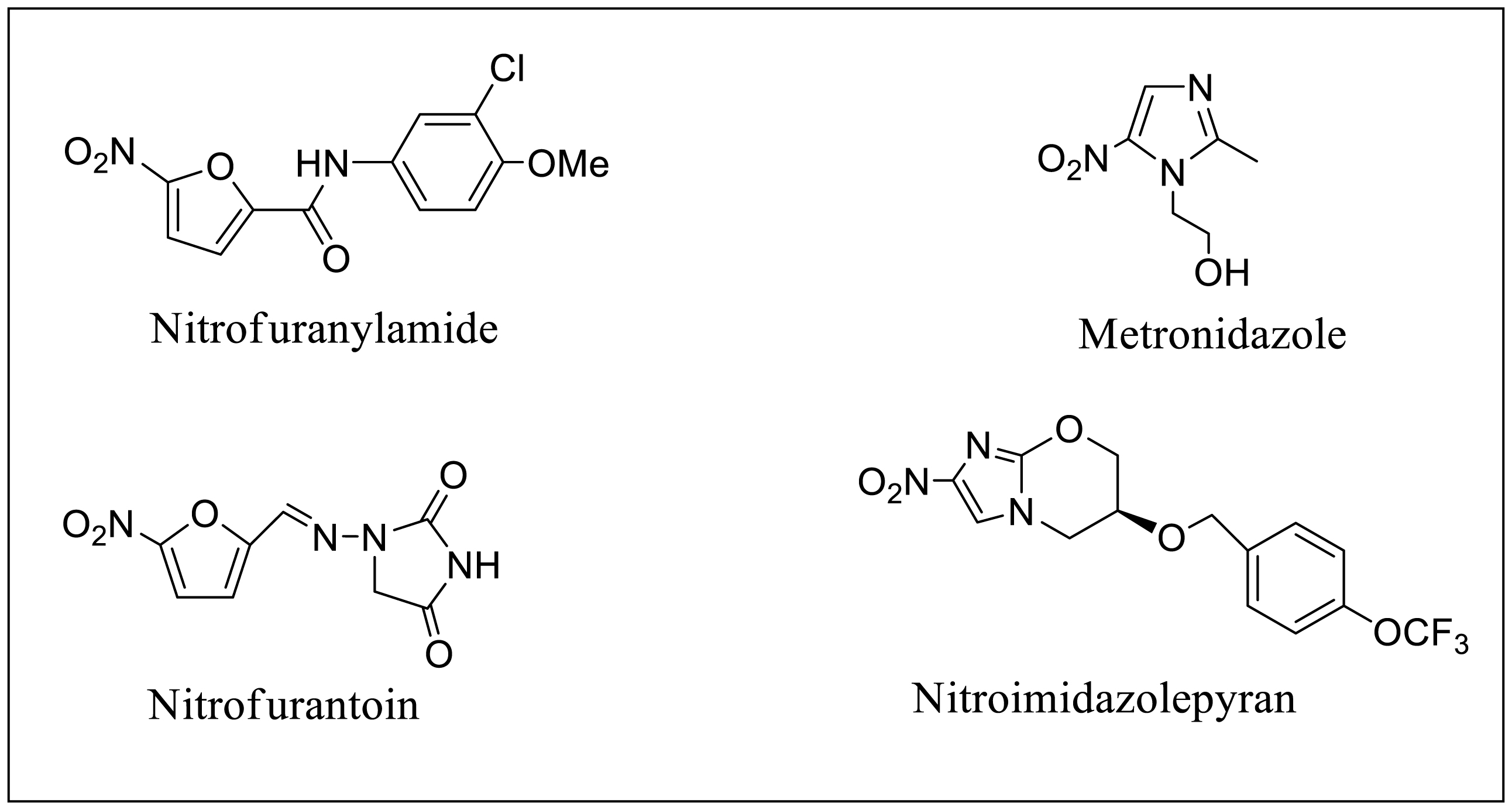









 DownLoad:
DownLoad:
